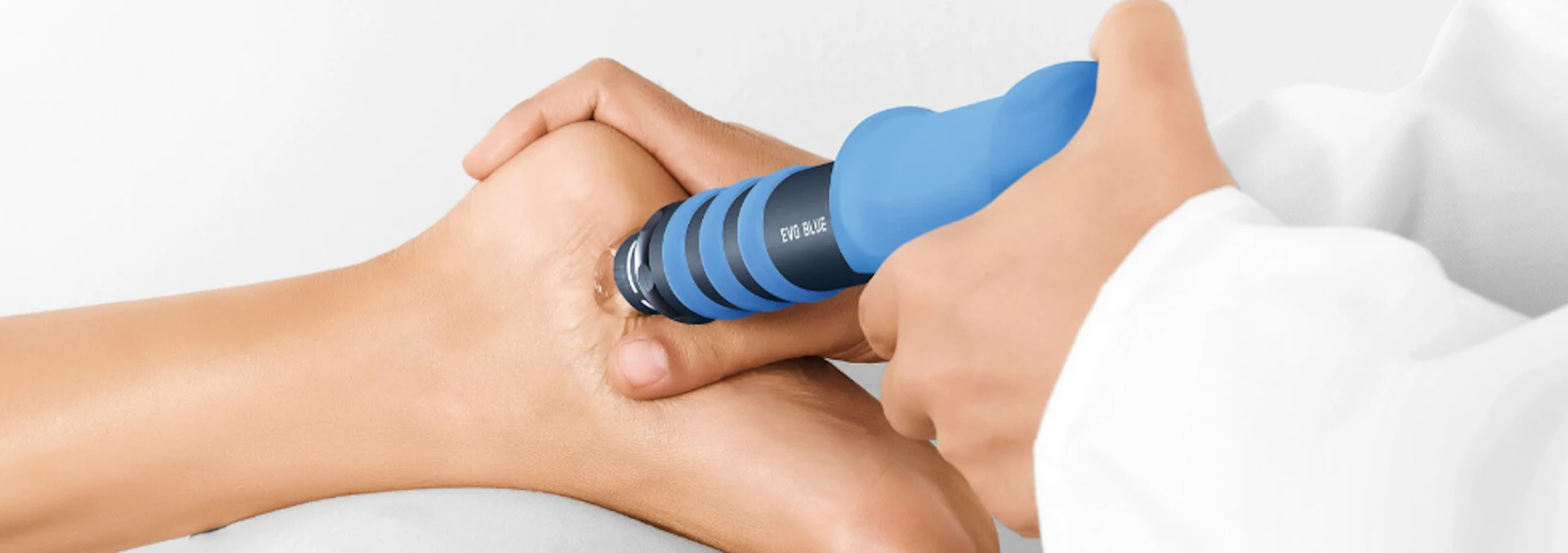Saturday, April 19, 2014
Extracorporeal Shock Wave Therapy

Do you suffer from ankle pain or a painful heel? Extracorporeal Shock Wave Therapy (ESWT) is non-invasive out patient procedure for the treatment of certain painful conditions of the heel such as plantar fasciitis or Achilles tendinopathy.
Extracorporeal Shock Wave Therapy
The treatment involves the use of an Extracorporeal Shock Wave Therapy device. Your doctor will apply the device over the painful area where high-frequency pulses then pass through the skin to the affected region. Repeated 3 times at weekly intervals, the treatment lasts about 5 minutes.
Its use has been approved by NICE (National Institute for Health and Clinical Excellence), providing it is part of an audited practice. Shock Wave Therapy does not require anaesthetic or surgery.

How does Radial Shockwave Therapy work?
ESWT devices generate pulses of high-pressure sound that travel through the skin with the aim of stimulating natural healing processes. A little bit of ultrasound jelly is placed on the skin to allow the waves to pass through the skin.
The treatment is thought to initiate an inflammation-like response. Where blood circulation improves and the body’s own healing mechanisms kick in. The shockwaves can also break down injured tissue and chalky materials (calcifications).
What are the side effects of Extracorporeal Shockwave Therapy?
Reported side effects are minimal. There is a small risk of tendon rupture although this may be related to the underlying pathological process rather than the treatment itself.
Is the shockwave treatment painful?
The treatment is a bit uncomfortable, but most people can tolerate this without problems. Because the treatment has an anaesthetic effect, you will normally experience a reduced level of pain or no pain at all immediately after the treatment. A dull ache may appear a few hours later and last a day or so.
What do I do if I am in pain after the treatment?
Take over the counter painkillers such as paracetamol or ibuprofen. You may also rub in a cream such as voltarol cream or Ibulieve.
What activities should I do after the treatment?
You may return to normal activities but listen to your body. If these activities are painful then you should refrain from doing them and seek the advice of your specialist.
What are the contraindications to treatment?
Contra-indications means reasons to not have the treatment.
- Steroid injections into the affected area within 3 months.
- Bleeding problems or you are on anticoagulants (such as Warfarin).
- Heart conditions and blood circulation disturbances.
- Acute inflammation or infection in the treatment area.
- Pregnancy.
- Active cancer within 12 months.
If you suffer from any of the above, please inform your doctor immediately.
Can I see a video of Shockwave therapy being administered?
NICE have only recommended its use as part of a carefully controlled audit or research. So make sure the person offering you such a treatment is fully recognised and authorised to treat tendon problems.
References
Extracorporeal shockwave therapy for refractory Achilles tendinopathy (IPG312) http://guidance.nice.org.uk/IPG312
Extracorporeal shockwave therapy for refractory plantar fasciitis (IPG311) http://guidance.nice.org.uk/IPG311
Did you find this article useful? Please let us know the comments below! You may also like;